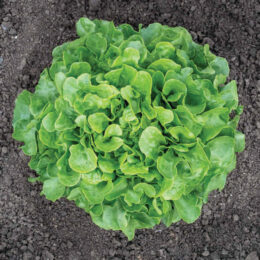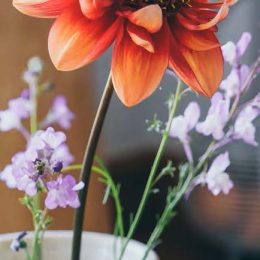By B. Rosie Lerner

Perhaps you’ve heard of the old saying: “Leaves of three, let it be?” That’s still excellent advice for those who are sensitive to the poison ivy plant. But navigating past poison ivy in a sea of green leafy plants along the fence rows or forest paths can be downright confusing.
A perplexing plant
Poison ivy is generally a woody plant and can be in the form of a shrub, ground cover, and/or climbing vine. Though the “leaves of three” may seem to be three individual leaves, poison ivy leaves are compound rather than simple. A single leaf is actually a cluster of three “leaflets.” Plants with three leaflets are often referred to as being trifoliate.
The two lower opposite leaflets are attached by a very short or absent stalk. The third or top leaflet is attached by a relatively long stalk. The leaflets can be quite variable along the edge, sometimes scalloped, toothed, or irregularly toothed.
Poison ivy flowers are rather inconspicuous and usually not noticed by gardeners. The subsequent fruits are greenish white, smooth berries in clusters about the size of currants. Birds and other wildlife eat the berries and then spread the seed in their droppings. So poison ivy can show up just about anywhere. Poison ivy often has outstanding red fall foliage.
Lookalikes
There are a few look-alike plants that gardeners could mistake for poison ivy. Boston ivy is a common landscape vine that is trifoliate, but only in the very young foliage. In Boston ivy, each leaflet is attached by a stalk. In poison ivy, generally only the top leaflet is attached by a stalk. Mature Boston ivy leaves are three-lobed, but not
separated into separate leaflets.
Fragrant sumac, a small shrub, is also trifoliate, but none of the leaflets have stalks. Their fruit are red and slightly fuzzy.
Other plants also may have three leaflets and add to your confusion,
so if there is any doubt, it is always best to proceed with caution.
Eradicating poison ivy
Several herbicides are available for control of poison ivy. Keep in mind, though, that any herbicide that will kill poison ivy, will also kill any desirable plants.
If you plan to spray or pull poison ivy, be careful to avoid exposing your skin to the plant. Wear gloves, long pants, socks and shoes, and a long-sleeved shirt, and wash or discard the clothing when done. Remember, the offending chemical in poison ivy is contained in oil that can be carried on tools, pets, clothing or other items that come in contact with the plant.
NEVER burn poison ivy! The smoke from burning the plant contains particles that can cause serious injury to the eyes, skin and respiratory tract.
For more information on Poison Ivy, see Purdue Extension Bulletin HO-218-W, https://www.extension.purdue.edu/extmedia/HO/HO-218-W.pdf.
B. ROSIE LERNER is the Purdue Extension consumer horticulturist and is a consumer of Tipmont REMC. Questions about gardening issues may be sent to “Ask Rosie,” Indiana Connection, 8888 Keystone Crossing, Suite 1600, Indianapolis, IN 46240-4606, or use the form at IndianaConnection.org.



